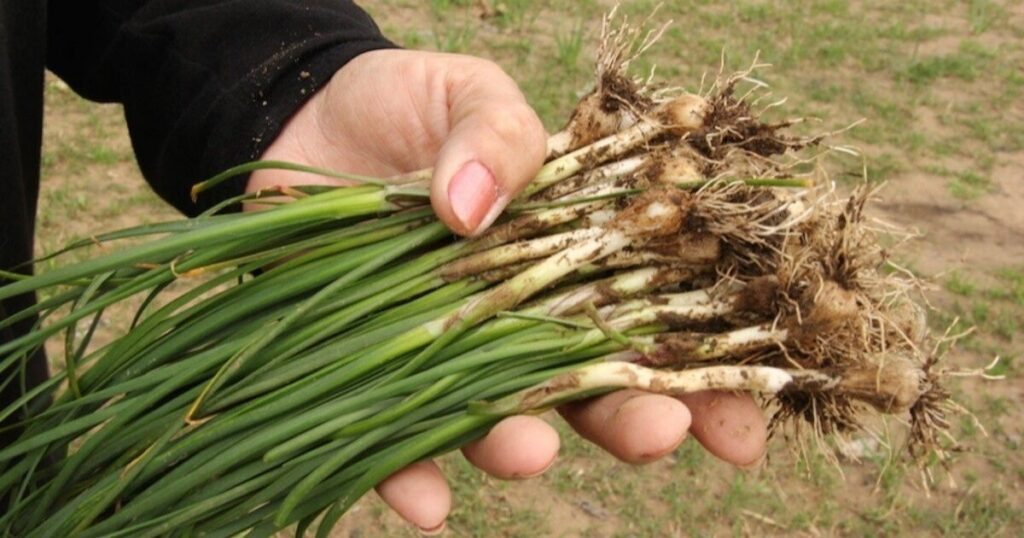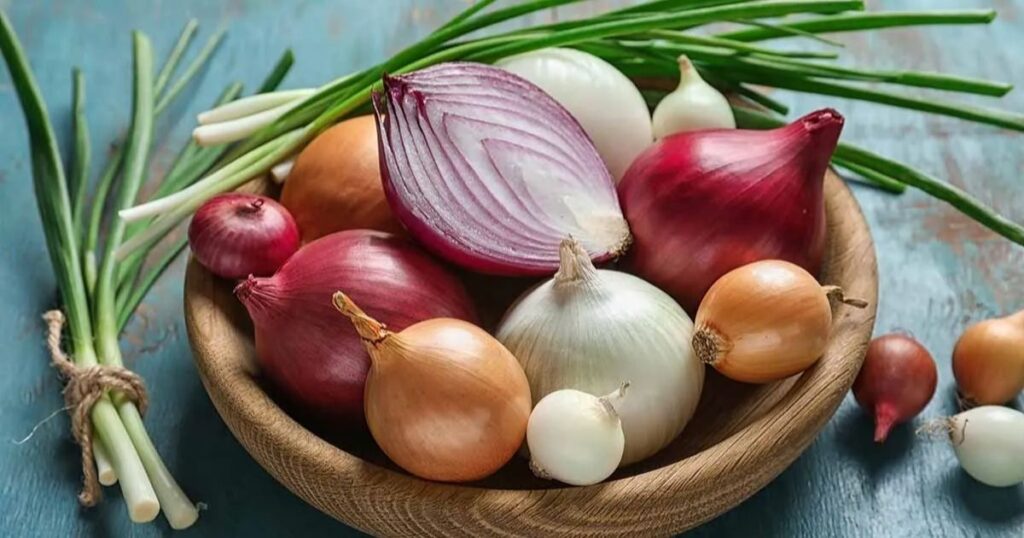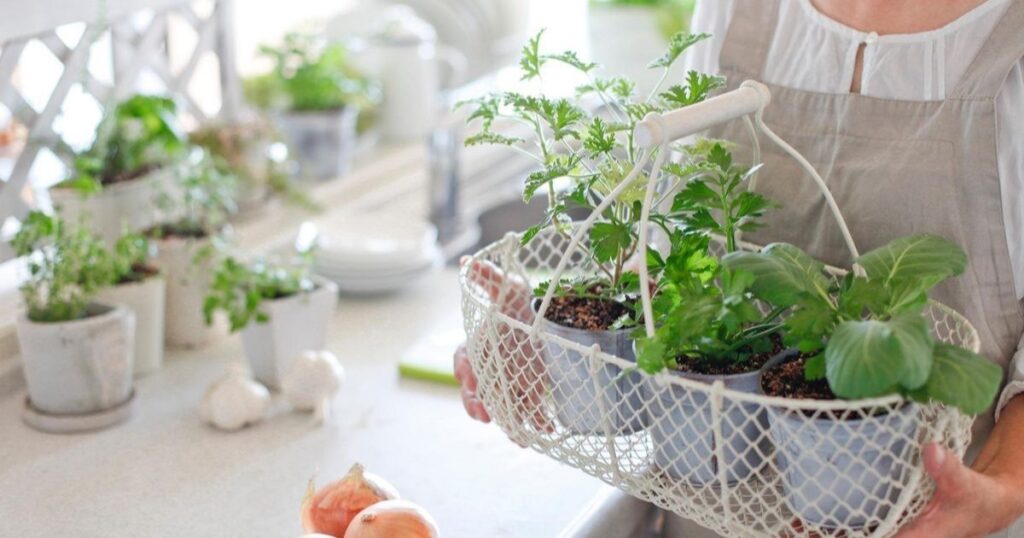A hidden gem called wild onions appears from the ground as the winter cold gives way to the warmth of spring. Foragers have been using these strong-smelling alliums for generations because they provide flavor and freshness to food while also serving as a link to the bounty of nature. Gathering and eating wild plants could seem intimidating if you’re new to the world of foraging. Nonetheless, gathering wild onions can be a fulfilling and sustainable activity if one is prepared and takes the appropriate safety measures.
We’ll explore the skill of recognizing, gathering, and utilizing wild onions in this extensive book, giving you the resources you need to forage responsibly and safely. This article will provide you with the knowledge and skills to fully enjoy the abundance of nature’s edible offers, from identifying their unique characteristics to comprehending the best techniques for sustainable foraging.
A Guide to Recognizing Wild Onions
Successful foraging begins with precise identification. The Allium genus, which includes well-known culinary herbs like garlic, chives, and ramps, includes wild onions. There are a few distinguishing traits to look for, albeit their appearance may vary slightly according to the species and growing conditions.
1. Smell: One of the best ways to identify wild onions is usually by their distinct onion or garlicky aroma. Gently break a leaf or stem before harvesting, and smell it; if it smells like onions, you’re probably in the proper place.
2. Appearance: The green stems of wild onions are usually thin, hollow, and resemble green onions or chives. The plant may reach a height of 18 inches, and its leaves may be flat or cylindrical. Some species have broad, flat leaves that appear early in the spring, like ramps.
3. Flowers and bulbs: At the top of the stem, depending on the season, you could discover clusters of tiny, white, or pinkish-purple flowers. Similar to a green onion or shallot, wild onions have a small, elongated bulb underground.
Before eating wild onions, make sure you recognize them correctly because several plants that resemble them can be poisonous. It is preferable to err on the side of caution and seek advice from a knowledgeable reference book or forager if you are unsure.
How to Gather Wild Onions in the Spring

After you can confidently identify wild onions, it’s important to find out how to collect them sustainably.
How to determine when to harvest onions
Depending on the species and purpose, several times of year are best for harvesting wild onions. Generally, after the flowers have flowered or set seed, you can pick the entire plant. You can harvest the greens sooner if you are simply going to use them, just be careful not to take too many from one patch.
Gathering wild onions for use
It’s critical to harvest wild onions with as little impact as possible on the surrounding environment and to make sure the plant can regrow for subsequent growing seasons. Take these actions:
- Scout the area: Seek for areas with wild onions and determine the population’s size. Steer clear of harvesting from places with few plants or small clusters.
- Dig carefully: Lightly loosen the soil surrounding the plant’s base with a trowel or strong fork. Take care not to harm the roots or bulb.
- Selective harvesting: Remove just a fraction of each patch’s plants, allowing enough for regrowth and reseeding.
- Replant bulbils: To promote further growth, replant some of the little bulbs that form at the top of stems after harvesting plants that have bulbils.
- Change up the locations: To allow for recovery, switch up the places where you harvest if you intend to return to the same area in the future.
Recall that maintaining the long-term viability of wild plant populations depends on responsible foraging. Always remember to leave enough behind for the plants to flourish and never take more than you need.
Also read this post:Garden Using Cinnamon
Edible Parts of Wild Onions
You may enjoy every part of the plant when foraging for wild onions, which is one of its best features! Every part, from the strong subterranean bulb to the delicate greens and blooms, has a distinct flavor and culinary use.
- subterranean bulb: The subterranean bulb of wild onions is utilized in many different recipes and has a flavor and texture similar to those of shallots or green onions. You may roast them whole, cut them up for salads or salsas, or slice them into soups or stews.
- Stem and greens: Similar to chives or green onions, the thin stems and green leaves of wild onions can be consumed raw or cooked. Add them to salads, chop them into omelets, or use them as a garnish for stews and soups.
- Flowers: Edible as well as gorgeous, wild onions have exquisite flowers. Toss them into salads for a burst of color and taste, or use them as a vibrant and tasty garnish for food.
- Bulbils: At the top of the stem, several wild onion varieties grow tiny bulbs known as bulbils. You harvest these and use them like regular onions, or you can plant them again to make more plants.
Remember that wild onions can have a strong flavor, especially when used raw, while preparing with them. Start with small quantities and modify them based on your personal preferences.
Keeping Wild Onions in Storage

It’s crucial to understand how to store your wild onion crop to preserve its freshness and longevity after a fruitful foraging expedition. Here are a few easy techniques:
- Storage in the refrigerator: Wild onions can be kept for up to a week in the refrigerator. After trimming off any wilted or damaged sections, store the onions in a plastic bag or container that has a paper towel dampened inside to keep moisture in.
- Mason jar method: Take into account the Mason jar method for longer-term storage. After giving the onions a good cleaning, put them in a sterilized mason jar with water inside. To keep the onions fresh, place the jar in the refrigerator and replace the water every few days.
- Drying or freezing: You may also freeze or dry wild onions in case you have an excess of them for later use. Slice or chop the onions, then arrange them on a baking sheet and set them in a dehydrator or somewhere cool and dry to dry them out. As an alternative, you can freeze the onions for up to a year after blanching them.
Use your harvest of wild onions within a fair amount of time to preserve optimal flavor and freshness, regardless of the storage method you pick.
Foraging’s Ethical Sustainability
It’s important to approach foraging for wild onions with an ethical and responsible perspective, even though it can be a rewarding and sustainable activity. Damage to delicate ecosystems or overharvesting can hurt plant populations and the environment. Here are some essential guidelines to remember:
- Leave enough for regeneration: You should always leave some wild onion plants behind so they can sprout again next season.
- Reduce disturbance: When harvesting, take care not to step on nearby plants or soil, and tread carefully.
- Show respect for private property: Never go scavenging on someone else’s property without their consent.
- Comply with local laws: Make sure to investigate and abide by any local laws that may apply to foraging as some places may have limits or regulations.
- Vary the places you forage: To avoid over-utilizing a single spot, switch up where you gather.
- Practice accurate identification: You should never eat a plant unless you are positive about its identity and suitability for consumption.
You can take advantage of the abundance of wild onions while protecting their long-term existence and reducing your environmental effects by adhering to these ethical rules.
What You Should Plant in May
Cultivating your culinary garden is an additional method to interact with nature’s abundance, even though foraging for wild onions can be a fulfilling experience. May is a great month to start planting a variety of vegetables in your backyard or community garden as the warm weather rolls in. Here are some concepts to think about:
- Tomatoes: A traditional summertime staple, tomatoes come in cherry, beefsteak, and heritage kinds. Sow them in soil that drains well, and give them support as they grow.
- Peppers: A popular ingredient in many recipes, peppers grow well in warm climates and range in flavor from sweet bell peppers to spicy chili kinds.
- Summer squash and zucchini: These hardy plants yield an abundance of adaptable vegetables that can be baked into bread and muffins or grilled. They are ideal for summer harvests.
- Beans: For a fruitful and nutrient-dense crop, plant bush or pole kinds of snap peas, lima beans, or green beans.
- Cucumbers: Perfect for salads, pickling, or as a nutritious snack, cucumbers are crisp and refreshing.
- Herbs: You should think about planting parsley, cilantro, dill, and basil in May. Fresh herbs are simple to grow and add a wonderful taste to any meal.
Keep in mind your climate, the state of your soil, and the precise planting needs of each crop when you design your garden. You can soon be gathering fresh produce from your own garden to go with your wild onions that you’ve foraged, all it will take is some patience and cautious management.
Kitchen Garden in Austin: April Plants to Grow

April is a great month to start organizing and planting your kitchen garden if you live in the Austin, Texas, area. The climate of Central Texas supports a wide range of crops, provided they receive enough sunshine and warm temperatures. In April, consider the following suggestions for your Austin kitchen garden:
- Tomatoes: Start tomato seedlings or transplants in the first part of April, selecting heat-tolerant hybrids or cherry tomatoes that are suitable for Texas’s extreme heat.
- Peppers: For a summer harvest, bell peppers, jalapeños, and other pepper species can be planted in April.
- Okra: Grown in late April or early May, this heat-loving vegetable is a mainstay in Southern cooking.
- Eggplant: In late April, plant eggplant seedlings in your garden, making sure they get lots of sun and water.
- Herbs: To add flavorful, fresh accents to your summertime dishes, plant parsley, basil, cilantro, and other herbs in April.
- Melons: After the soil has warmed up, late April is a good time to plant cantaloupe, watermelon, and honeydew.
To preserve moisture and prevent weed growth, mulch should be used. Don’t forget to water your plants regularly, especially during the sweltering summer months. Your Austin kitchen garden will yield abundant produce all summer long with careful design and maintenance.
In summary:
Gathering wild onions is a fulfilling and enduring activity that fosters a connection with the bountiful natural world. Gathering our food is a joy, but it also requires care to identify, harvest, and use these fragrant alliums wisely, protecting the delicate balance of the natural world.
Remember to approach foraging with respect and reverence for the abundance of the Earth, whether you use wild onions in your culinary creations, grow a kitchen garden, or just enjoy the beauty of these hardy plants. We can make sure that future generations can enjoy the wonders of foraging for themselves by upholding ethical standards and advocating for sustainable methods.
So gather your supplies for foraging, put on your hiking boots, and head out for a delectable outdoor experience. The wild onions are waiting to enhance your culinary adventures with their distinct flavor and strengthen your bond with the natural world.
FAQs:
How can wild onions be used?
There are many culinary applications for wild onions; they can infuse omelets, soups, stews, and salads with their strong flavor. The plant’s greens, blooms, bulbs, and bulbils are all edible portions that can be utilized either way.
Where are wild onions found?
In many natural settings of North America, wild onions can be found growing in patches or clusters in fields, meadows, along creek banks, or wooded areas. They can be found in both rural and urban areas, and they do best in soils that drain well.
What is misidentified as wild onions?
Some plants can be dangerous, therefore avoid plants that resemble wild onions, such as deadly camas and false garlic. Before gathering or consuming any wild plants, it is essential to identify them correctly by scent and look.
How are wild onions prepared and consumed?
There are several ways to cook wild onions, including roasting, sautéing, and adding them to soups and stews. You may use the greens as garnishes and in omelets and salads, just like green onions or chives. While the blossoms can be used as garnishes or to provide a pop of color and taste to salads, the bulbs can be roasted whole or diced and added to recipes.











